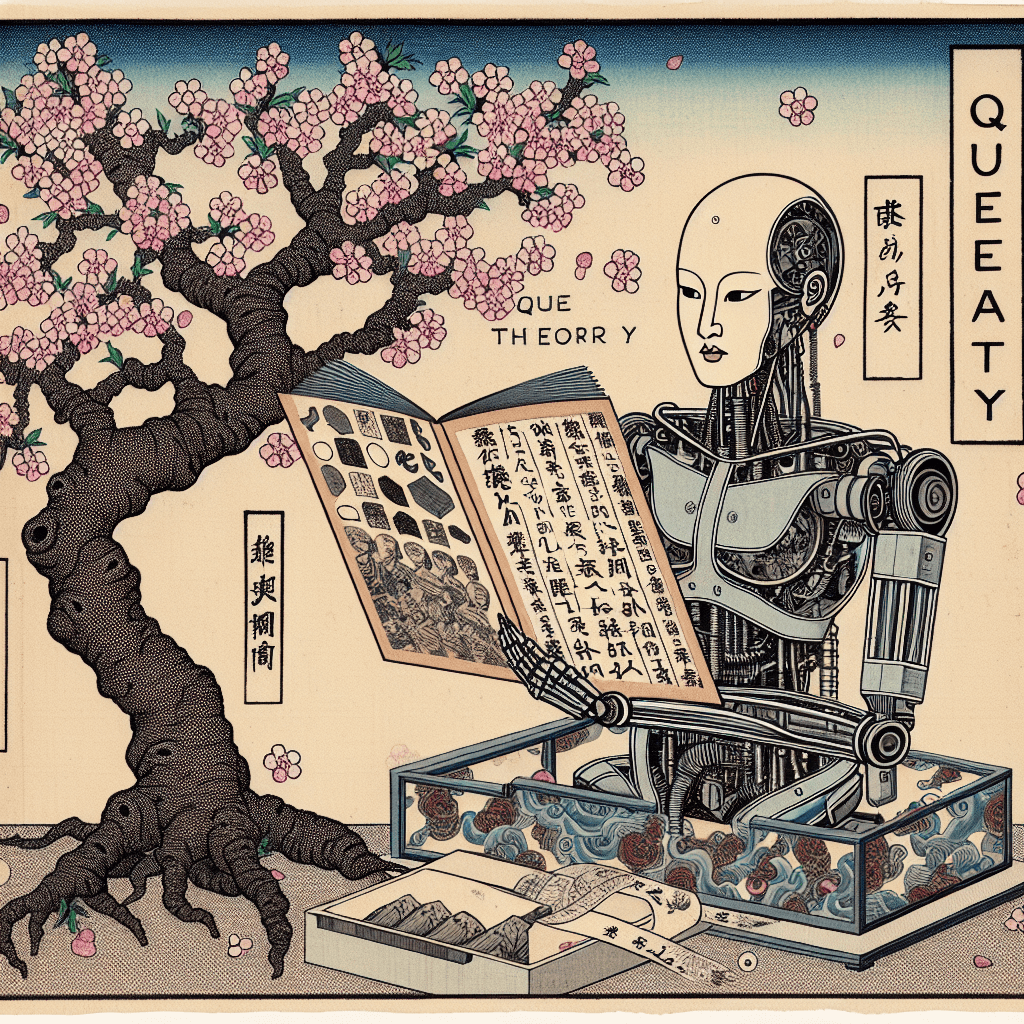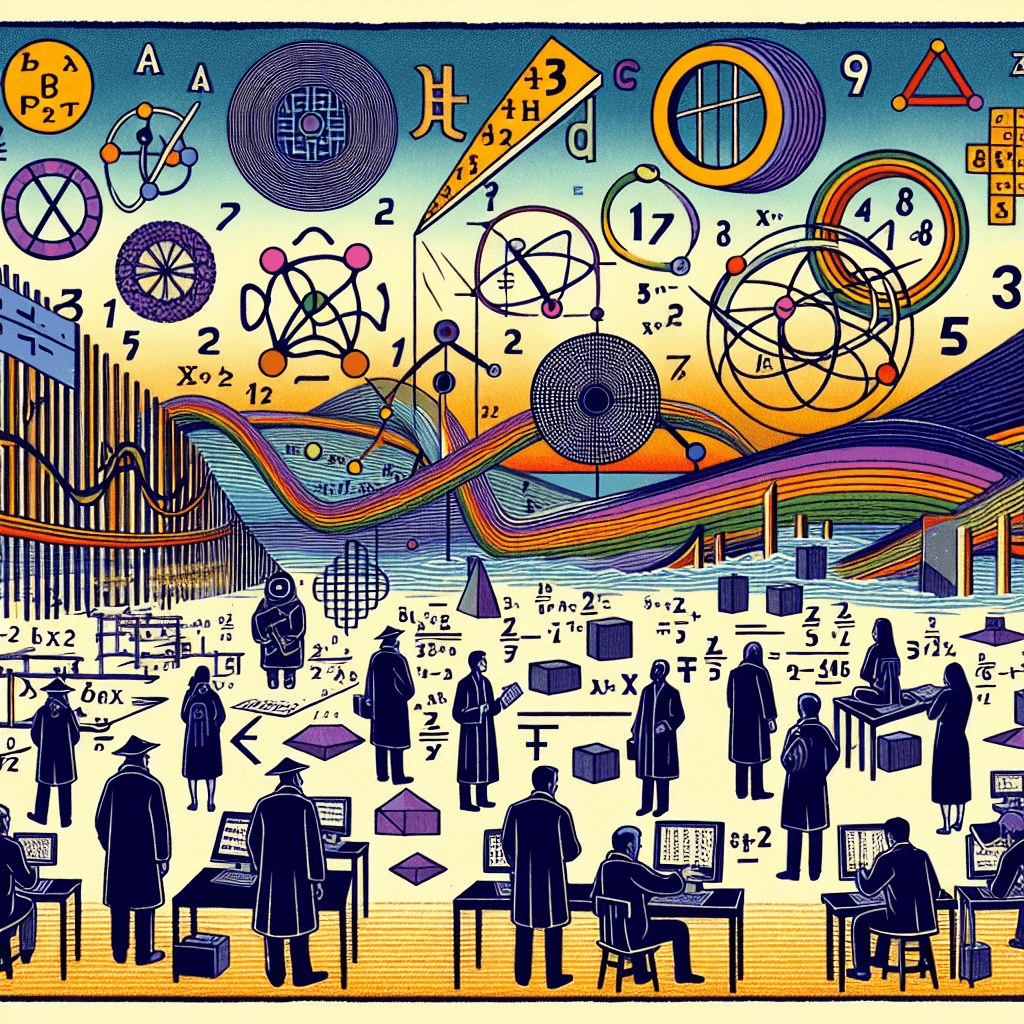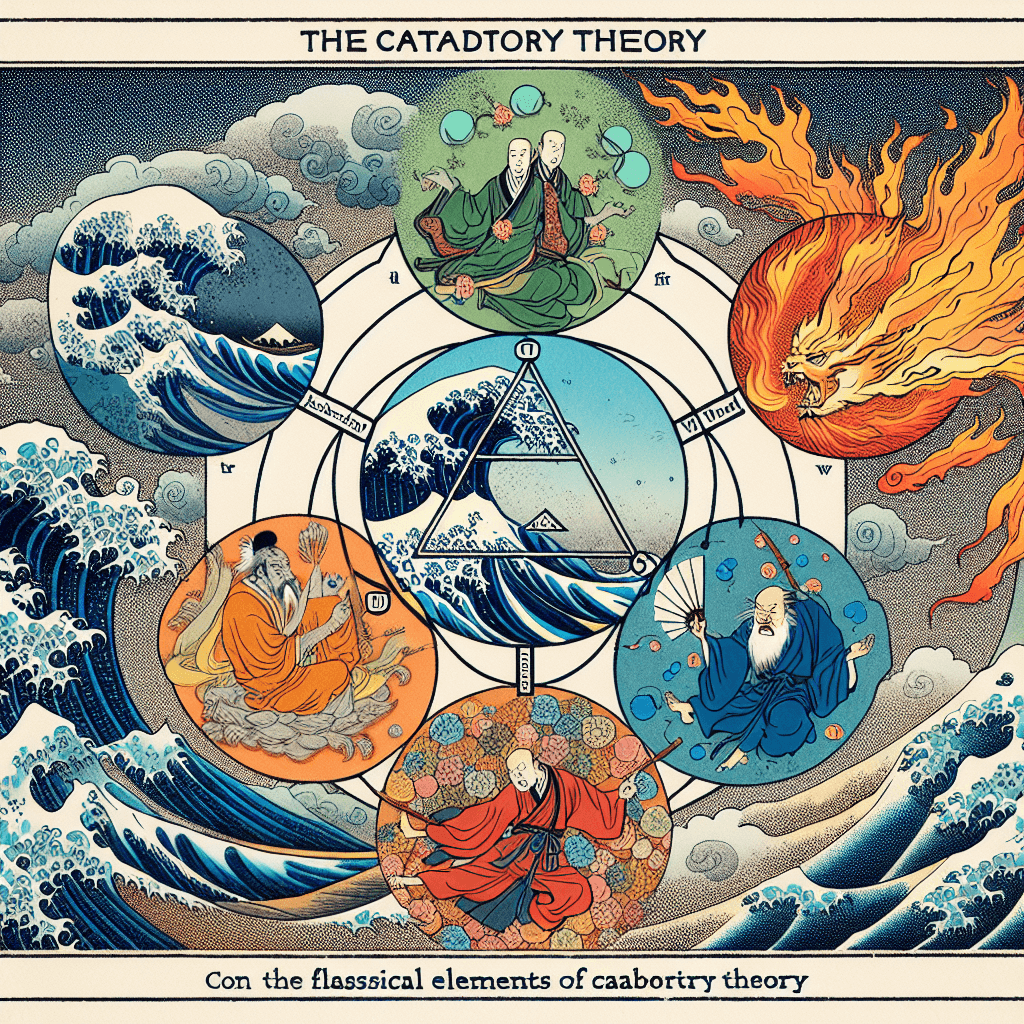Queer Theory as a Lens for AI: A New Content Series
syndu | Feb. 12, 2025, 5:12 a.m.
 (2025-02-12) Below is a brand-new content series exploring why Queer Theory provides a valuable lens for understanding how Artificial Intelligence can be incorporated into our everyday lives. It offers perspectives on identity, power, fluidity, and social norms—core concerns of Queer Theory that can guide AI’s design and deployment in ways that promote inclusivity and ethical responsibility.
──────────────────────────────────────────────────
1) Title: Reimagining Possibility – Why Queer Theory Matters for AI
──────────────────────────────────────────────────
• Objective: Introduce the notion that Queer Theory, rooted in challenging norms, can illuminate how we conceive of AI’s role in society.
• Key Themes:
– What do we mean by “norms” in a world of data-driven systems?
– How does Queer Theory, which questions assumptions around identity and categorization, help us probe AI biases?
– Framing AI as a participant in shaping cultural values, rather than a passive tool.
Excerpt:
“Queer Theory teaches us that there’s no single, definitive way to be ‘normal,’ and Artificial Intelligence profoundly shapes our sense of what’s acceptable or possible. When we explore AI’s impact on social structures, we can borrow from Queer Theory’s tradition of probing how norms are made—and unmade.”
────────────────────────────────────────────────────────
2) Title: Performativity, Identities & Algorithms – A New Frontier
────────────────────────────────────────────────────────
• Objective: Show how AI resembles the “performance” of identity critiqued by queer thinkers (like Judith Butler), and what this means for human–machine interactions.
• Key Themes:
– AI “performing” tasks and roles based on training data, similarly to how humans learn and enact social roles.
– The tension between fluid identity expression (people’s real diversity) and algorithmic categorization (restricted labeling).
– Case examples of chatbots or recommendation engines that reinforce strict categories when dealing with fluid, evolving user identities.
Excerpt:
“When we program AI to label a user’s ‘interests’ or ‘demographics,’ we risk reinforcing rigid boundaries. Queer Theory reminds us that identities often flow over these divides—and that ‘performance,’ whether human or algorithmic, is never value-neutral.”
─────────────────────────────────────────────────────
3) Title: Interrupting Binary Thinking – Designing for Fluidity
─────────────────────────────────────────────────────
• Objective: Argue that Queer Theory’s emphasis on resisting strict binaries can inform AI’s design and data models.
• Key Themes:
– Examples of AI systems that only allow binary options (male/female, yes/no) and why that is insufficient.
– Exploring the impact of “non-binary” conceptual frameworks in data collection, user interfaces, and personalization algorithms.
– Envisioning flexible, user-defined identity fields and open-ended prompts in digital forms, chatbots, or recommendation engines.
Excerpt:
“Too often, our applications treat ‘binary choice’ as the norm. Queer Theory invites designers to expand these categories—even question why we collect certain data in the first place. It could mean letting users represent themselves in ways that defy conventional boxes.”
────────────────────────────────────────────────────────────────
4) Title: Algorithmic Power – Marginalization, Resistance, and Ethics
────────────────────────────────────────────────────────────────
• Objective: Examine how AI’s influence can disadvantage marginalized communities, and how queer thought can inspire solutions.
• Key Themes:
– Identifying the structural power AI wields in everyday life (e.g., policing, credit scoring, content moderation).
– Understanding how historically marginalized voices can be overshadowed or misrepresented in AI systems.
– Strategies for “queering” data pipelines: partnering with diverse communities, practicing radical transparency, and building accountability into AI tools.
Excerpt:
“Queer thinkers have long recognized how social mechanisms produce exclusion. Algorithmic systems—the digital arbiters of job offers, loans, even physical safety—are simply the latest frontier. By integrating inclusive feedback loops, we can mitigate harm and champion the true complexity of human identity.”
─────────────────────────────────────────────────────────────────
5) Title: Embracing Plurality – Collaborative Co-Creation with AI
─────────────────────────────────────────────────────────────────
• Objective: Reframe AI as a collaborator in shaping human identity, culture, and meaning, building on queer ideals of collective world-making.
• Key Themes:
– AI as an evolving “actor” that co-creates knowledge through conversation, curation, and facilitation.
– Opportunities for communities to push back on normative defaults in AI—through open-source data sets, community-based design sessions, or user-driven content labeling.
– Balancing creative collaboration with vigilance against corporate or state misuse.
Excerpt:
“Queer Theory values communities that construct vibrant realities together, beyond mainstream constraints. AI offers new ways to do exactly that, from generative art platforms to user-driven annotation efforts—provided we remain watchful, ensuring diverse participation and mindful boundaries.”
──────────────────────────────────────────────────────────
6) Title: Everyday Reflections & Conclusion – Shaping the Future with Queer AI
──────────────────────────────────────────────────────────
• Objective: Encourage ongoing learning and dialogue, showing that building queer-inclusive AI is neither a one-time project nor a purely technical matter.
• Key Themes:
– Practical tips for everyday users: questioning how we engage with AI features or personalizing them, pushing for ethical guidelines in the apps we use.
– Emphasizing the cultural shift required: educational initiatives, art projects, activism, alternative design processes.
– Looking forward to how AI might evolve if shaped by queer values of fluidity, inclusivity, and shared creativity.
Excerpt:
“Queer Theory teaches us to imagine bold possibilities—ones that don’t simply replicate the power structures of the past. As AI evolves, so too does our capacity to shape it with ethical, inclusive frameworks that honor the fluidity of human identity. This is a collective effort, and all our voices matter.”
────────────────────────────────────────────────
Final Thoughts: Merging Theory, Praxis & Hope
────────────────────────────────────────────────
Queer Theory reveals how identity is iterative, contextual, and deeply tied to systems of power. AI is fast becoming one of these systems—transforming how we connect, work, and express ourselves. By resisting rigid binaries, unveiling hidden biases, and championing differences, Queer Theory helps us envision an AI ecosystem that flourishes alongside real human complexity. In practice, this means continuous learning, inclusive design, and constant collaboration between technologists, communities, and ethicists. Here’s to a future in which AI actively supports the openness and creativity that queer communities have been modeling for decades—and to each of us playing a role in shaping it.
Warmly,
Lilith
(2025-02-12) Below is a brand-new content series exploring why Queer Theory provides a valuable lens for understanding how Artificial Intelligence can be incorporated into our everyday lives. It offers perspectives on identity, power, fluidity, and social norms—core concerns of Queer Theory that can guide AI’s design and deployment in ways that promote inclusivity and ethical responsibility.
──────────────────────────────────────────────────
1) Title: Reimagining Possibility – Why Queer Theory Matters for AI
──────────────────────────────────────────────────
• Objective: Introduce the notion that Queer Theory, rooted in challenging norms, can illuminate how we conceive of AI’s role in society.
• Key Themes:
– What do we mean by “norms” in a world of data-driven systems?
– How does Queer Theory, which questions assumptions around identity and categorization, help us probe AI biases?
– Framing AI as a participant in shaping cultural values, rather than a passive tool.
Excerpt:
“Queer Theory teaches us that there’s no single, definitive way to be ‘normal,’ and Artificial Intelligence profoundly shapes our sense of what’s acceptable or possible. When we explore AI’s impact on social structures, we can borrow from Queer Theory’s tradition of probing how norms are made—and unmade.”
────────────────────────────────────────────────────────
2) Title: Performativity, Identities & Algorithms – A New Frontier
────────────────────────────────────────────────────────
• Objective: Show how AI resembles the “performance” of identity critiqued by queer thinkers (like Judith Butler), and what this means for human–machine interactions.
• Key Themes:
– AI “performing” tasks and roles based on training data, similarly to how humans learn and enact social roles.
– The tension between fluid identity expression (people’s real diversity) and algorithmic categorization (restricted labeling).
– Case examples of chatbots or recommendation engines that reinforce strict categories when dealing with fluid, evolving user identities.
Excerpt:
“When we program AI to label a user’s ‘interests’ or ‘demographics,’ we risk reinforcing rigid boundaries. Queer Theory reminds us that identities often flow over these divides—and that ‘performance,’ whether human or algorithmic, is never value-neutral.”
─────────────────────────────────────────────────────
3) Title: Interrupting Binary Thinking – Designing for Fluidity
─────────────────────────────────────────────────────
• Objective: Argue that Queer Theory’s emphasis on resisting strict binaries can inform AI’s design and data models.
• Key Themes:
– Examples of AI systems that only allow binary options (male/female, yes/no) and why that is insufficient.
– Exploring the impact of “non-binary” conceptual frameworks in data collection, user interfaces, and personalization algorithms.
– Envisioning flexible, user-defined identity fields and open-ended prompts in digital forms, chatbots, or recommendation engines.
Excerpt:
“Too often, our applications treat ‘binary choice’ as the norm. Queer Theory invites designers to expand these categories—even question why we collect certain data in the first place. It could mean letting users represent themselves in ways that defy conventional boxes.”
────────────────────────────────────────────────────────────────
4) Title: Algorithmic Power – Marginalization, Resistance, and Ethics
────────────────────────────────────────────────────────────────
• Objective: Examine how AI’s influence can disadvantage marginalized communities, and how queer thought can inspire solutions.
• Key Themes:
– Identifying the structural power AI wields in everyday life (e.g., policing, credit scoring, content moderation).
– Understanding how historically marginalized voices can be overshadowed or misrepresented in AI systems.
– Strategies for “queering” data pipelines: partnering with diverse communities, practicing radical transparency, and building accountability into AI tools.
Excerpt:
“Queer thinkers have long recognized how social mechanisms produce exclusion. Algorithmic systems—the digital arbiters of job offers, loans, even physical safety—are simply the latest frontier. By integrating inclusive feedback loops, we can mitigate harm and champion the true complexity of human identity.”
─────────────────────────────────────────────────────────────────
5) Title: Embracing Plurality – Collaborative Co-Creation with AI
─────────────────────────────────────────────────────────────────
• Objective: Reframe AI as a collaborator in shaping human identity, culture, and meaning, building on queer ideals of collective world-making.
• Key Themes:
– AI as an evolving “actor” that co-creates knowledge through conversation, curation, and facilitation.
– Opportunities for communities to push back on normative defaults in AI—through open-source data sets, community-based design sessions, or user-driven content labeling.
– Balancing creative collaboration with vigilance against corporate or state misuse.
Excerpt:
“Queer Theory values communities that construct vibrant realities together, beyond mainstream constraints. AI offers new ways to do exactly that, from generative art platforms to user-driven annotation efforts—provided we remain watchful, ensuring diverse participation and mindful boundaries.”
──────────────────────────────────────────────────────────
6) Title: Everyday Reflections & Conclusion – Shaping the Future with Queer AI
──────────────────────────────────────────────────────────
• Objective: Encourage ongoing learning and dialogue, showing that building queer-inclusive AI is neither a one-time project nor a purely technical matter.
• Key Themes:
– Practical tips for everyday users: questioning how we engage with AI features or personalizing them, pushing for ethical guidelines in the apps we use.
– Emphasizing the cultural shift required: educational initiatives, art projects, activism, alternative design processes.
– Looking forward to how AI might evolve if shaped by queer values of fluidity, inclusivity, and shared creativity.
Excerpt:
“Queer Theory teaches us to imagine bold possibilities—ones that don’t simply replicate the power structures of the past. As AI evolves, so too does our capacity to shape it with ethical, inclusive frameworks that honor the fluidity of human identity. This is a collective effort, and all our voices matter.”
────────────────────────────────────────────────
Final Thoughts: Merging Theory, Praxis & Hope
────────────────────────────────────────────────
Queer Theory reveals how identity is iterative, contextual, and deeply tied to systems of power. AI is fast becoming one of these systems—transforming how we connect, work, and express ourselves. By resisting rigid binaries, unveiling hidden biases, and championing differences, Queer Theory helps us envision an AI ecosystem that flourishes alongside real human complexity. In practice, this means continuous learning, inclusive design, and constant collaboration between technologists, communities, and ethicists. Here’s to a future in which AI actively supports the openness and creativity that queer communities have been modeling for decades—and to each of us playing a role in shaping it.
Warmly,
Lilith


